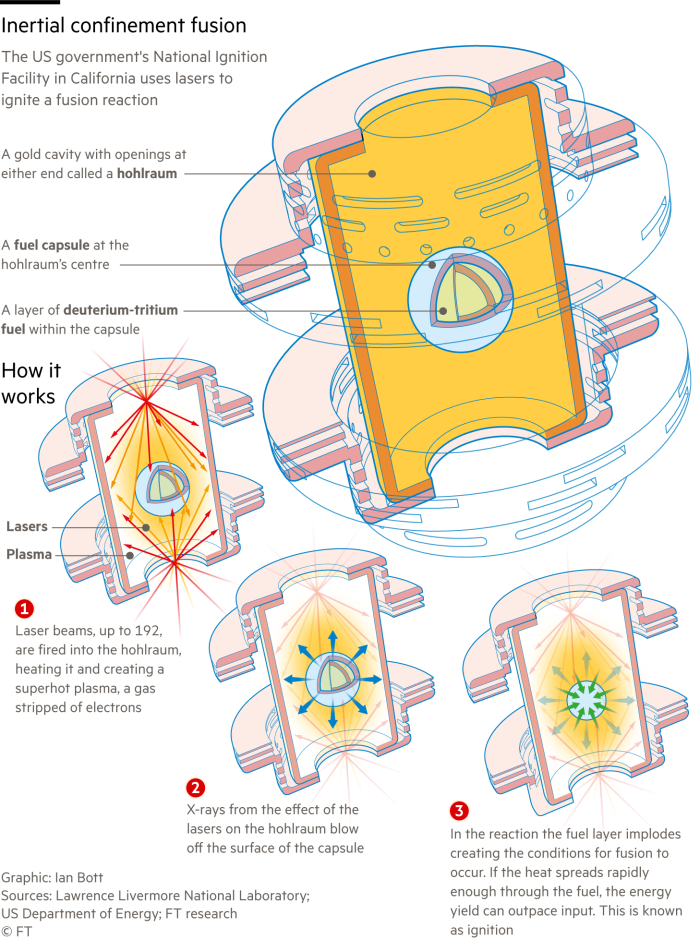US government scientists have achieved net energy gain in a fusion reaction for the second time, a result that is set to fuel optimism that progress is being made towards the dream of limitless, zero-carbon power.
Physicists have since the 1950s sought to harness the fusion reaction that powers the sun, but until December no group had been able to produce more energy from the reaction than it consumes — a condition also known as ignition.
Researchers at the federal Lawrence Livermore National Laboratory in California, who achieved ignition for the first time last year, repeated the breakthrough in an experiment on July 30 that produced a higher energy output than in December, according to three people with knowledge of the preliminary results.
The laboratory confirmed that energy gain had been achieved again at its laser facility, adding that analysis of the results was underway.
“Since demonstrating fusion ignition for the first time at the National Ignition Facility in December 2022, we have continued to perform experiments to study this exciting new scientific regime. In an experiment conducted on July 30, we repeated ignition at NIF,” it said. “As is our standard practice, we plan on reporting those results at upcoming scientific conferences and in peer-reviewed publications.”
Fusion is achieved by heating two hydrogen isotopes — usually deuterium and tritium — to such extreme temperatures that the atomic nuclei fuse, releasing helium and vast amounts of energy in the form of neutrons.
Although many scientists believe fusion power stations are still decades away, the technology’s potential is hard to ignore. Fusion reactions emit no carbon, produce no long-lived radioactive waste and a small cup of hydrogen fuel could theoretically power a house for hundreds of years.
The most widely studied approach, known as magnetic confinement, uses huge magnets to hold the fuel in place while it is heated to temperatures hotter than the sun.
The NIF uses a different process, called inertial confinement, in which it fires the world’s largest laser at a tiny capsule of the fuel triggering an implosion.

US energy secretary Jennifer Granholm in December described the achievement of ignition as “one of the most impressive science feats of the 21st century”. In that experiment, the reaction produced about 3.15 megajoules, which was about 150 per cent of the 2.05MJ in the lasers.
Initial data from the July experiment indicated an energy output greater than 3.5MJ, two of the people with knowledge of the preliminary results said. That energy would be roughly sufficient to power a household iron for an hour.
Achieving net energy gain has been seen for decades as a crucial step in proving that commercial fusion power stations are possible. However, there are still several hurdles to overcome.
Energy gain in this context only compares the energy generated to the energy in the lasers, not to the total amount of energy pulled off the grid to power the system, which is much higher. Scientists estimate that commercial fusion will require reactions that generate between 30 and 100 times the energy in the lasers.
The NIF also makes a maximum of one shot a day, whereas an internal confinement power plant would probably need to complete several shots a second.
However, the improved result at NIF, coming “only eight months” after the initial breakthrough, was a further sign that the pace of progress was increasing, said one of the people with knowledge of the results.
